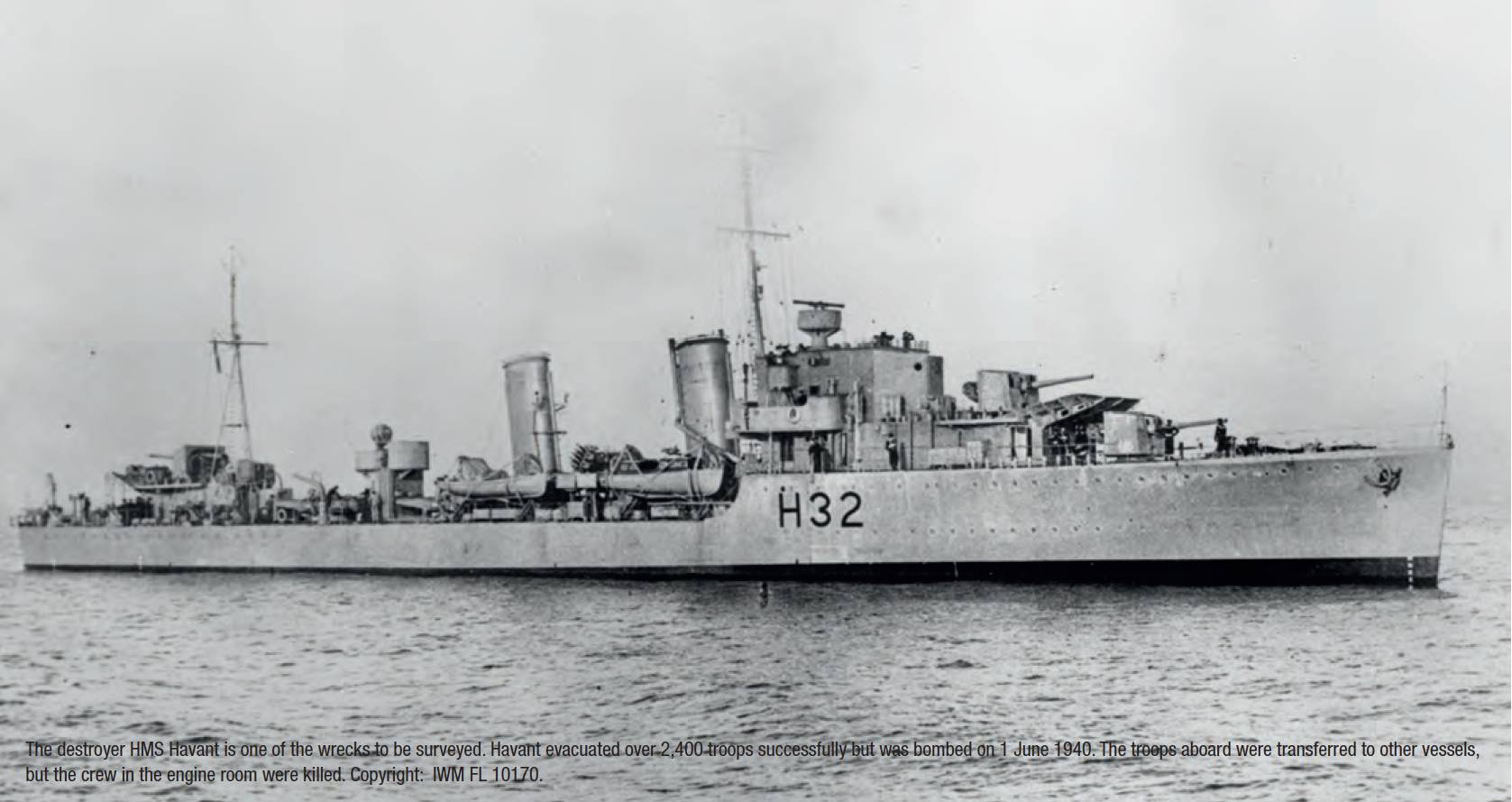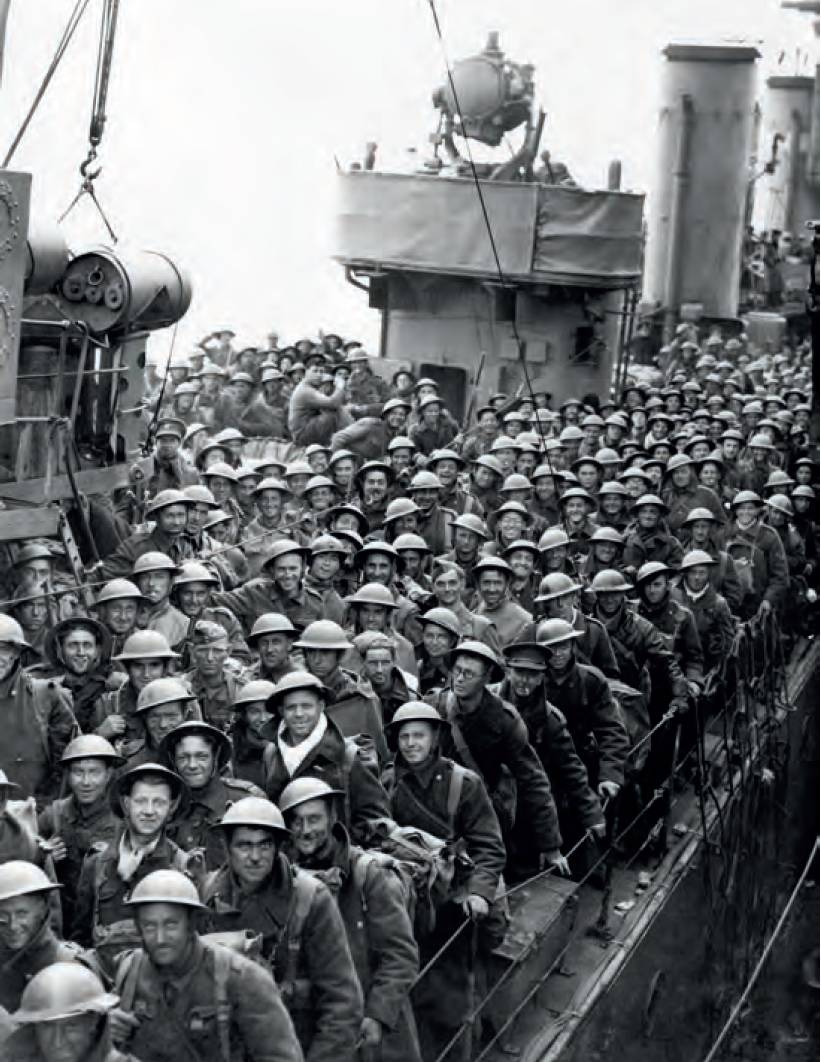Operation Dynamo
Historic England
BETWEEN 25 September and 8 October 2023, the French marine heritage agency, Drassm, in partnership with Historic England, surveyed 30 wrecks sunk during the rescue of Allied soldiers from Dunkirk during the Second World War, known as ‘Operation Dynamo’.
The operation was a key event in the early stages of the war. It involved the evacuation across the English Channel of 338,226 Allied soldiers surrounded by the German army.
From 26 May to 4 June 1940, military, transport, fishing and service vessels, as well as pleasure craft, were used to carry out the rescue by sea from Dunkirk in the north of France. Over a thousand ships flying British, French, Belgian, Dutch, Polish, Danish, Norwegian and Swedish flags were involved in the nine days and nights of the evacuation.

The project
More than 305 vessels were lost during Operation Dynamo. Research from 2021 to 2023 by Claire Destanque (Aix-Marseille University) has revealed new information about the location and condition of these wrecks. 37 wrecks linked to Operation Dynamo have already been located in French waters, particularly by divers from Dunkirk and the surrounding area.
A further 31 vessels are believed to have been lost in the area but have yet to be located. The new mission set out to search for these undiscovered wrecks and document the already known sites using geophysical survey equipment (multibeam echosounder, side scan sonar and magnetometer).
Led by Drassm archaeologists Cécile Sauvage and Claire Destanque aboard a Drassm research vessel, the André Malraux, the survey mission was captained by Fabien Géreux from Bourbon Offshore Surf. Drassm geophysicist Alexis Rochat was joined by UK geophysicist, Mark James of MSDS Marine, commissioned by Historic England for this role – the first collaboration between Drassm and Historic England.
On conducting the survey they found the position, characteristics, and condition of each wreck were revealed in remarkable detail. Seeing these wrecks in such detail for the first time was and is a powerful reminder of the scale and human cost of the evacuation and provided essential information for researching and managing these wrecks in future.

Survey findings
The principal instrument used for the survey was a multibeam echosounder mounted beneath the hull of the André Malraux. The instrument emits a fan of sound that is recorded as it bounces off the seabed. The data can then be used by geophysicists to create a highly detailed three-dimensional image of seabed features such as shipwrecks.
In total, 27 wrecks from Operation Dynamo were located and studied during the initial survey, with the position of 12 of these wrecks not previously known precisely before the survey. Four wrecks, either destroyed or covered by sand, could not be found.
The survey will inform discussions about a memorial for the Allied soldiers and seafarers who died at sea during Operation Dynamo.
A further 19 features were studied, three of which appeared to correspond to the location and characteristics of vessels lost during Operation Dynamo that were previously undiscovered.
And the identities of two wrecks, the French auxiliary minesweepers, Denis Papin, and Moussaillon, sunk by air attacks on 1 June 1940, have been corrected.
The new data demonstrated that previous identifications had confused the two wrecks.
The survey data was detailed enough to confirm the identification of 19 wrecks – dimensions and distinguishing features from the survey corresponded to documented dimensions of the vessels and to features on historic photographs.
On one of the wrecks, the davits from which lifeboats once hung can be seen in the survey data; their precise form, together with other details and dimensions, confirm that it is the Normannia, requisitioned as a troop carrier and sunk by an air attack on 30 May 1940.

The survey has confirmed that many of the Dynamo wrecks are in relatively good condition. However, the new data also shows recent changes. The destroyer HMS Keith was surveyed in 2016 and 2019 by the Port of Dunkirk (Grand Port Maritime de Dunkerque – GPMD), with the 2023 survey showing that part of the destroyer’s hull has degraded in just a few years, collapsing away from its former position.
The legacy

Dunkirk 26-29 May 1940. Evacuated British soldiers on board a destroyer are landed at Dover and wait to disembark. Copyright: IWM H 1628.
This is the first stage of a multi-year project. The 2023 survey will provide baseline information for diving investigations starting in partnership with local divers in 2024, providing an overall view of this heritage and enabling the introduction of conservation and public engagement strategies.
All this information, enhanced by further research, will not only expand historical and scientific knowledge on both sides of the Channel about Operation Dynamo and the maritime dimension of the evacuation, but also enrich the content of the Dunkirk War Museum with data, photos, videos, and, in particular, the future permanent exhibition at the Maison d’Accueil du Grande Site at the Ferme Nord in Zuydcoote.
It will also inform discussions about a memorial for the Allied soldiers and seafarers who died at sea during Operation Dynamo.
Historic England